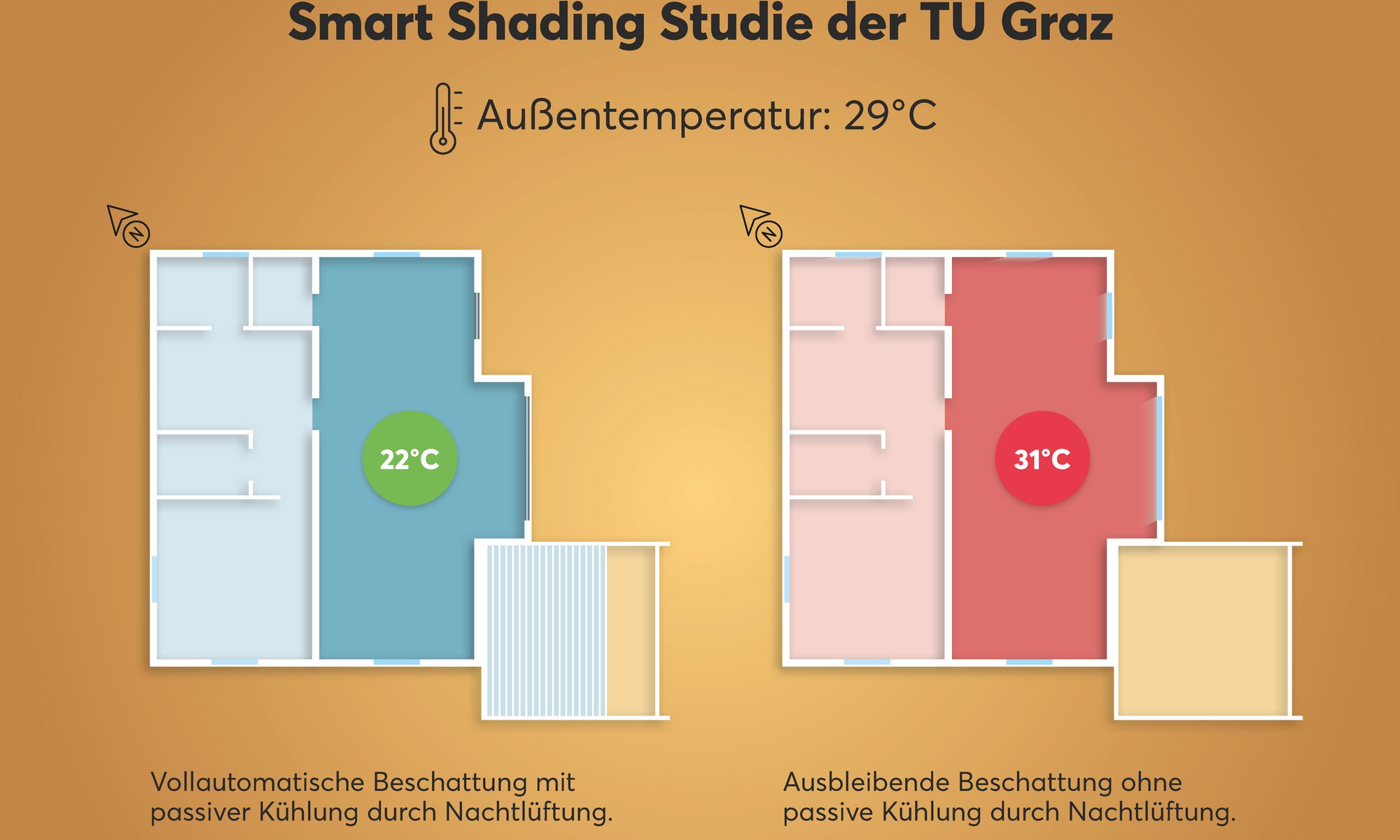A study carried out by the Graz University of Technology on behalf of Wo&Wo Sonnenlichtdesign GmbH & Co KG, Loxone (automatic controllers www.loxone.com/dede/) and Geiger (sight and sun protection drives in Baden-
Württemberg www.geiger.de) used a house equipped with Smart Home Technology to establish whether fully-automated shading and ventilation offered any advantages over manual controls.
Scientific Smart Shading Study confirms: Smart Home Systems prevent the home from overheating unbearably in summer and reduce cooling in winter.
This scientific study confirms that a house equipped with Smart Home Technology can bring significant benefits compared to regular manual solutions.
“It was important to us to obtain precise scientific data for the extent to which total Smart Home Solutions with automated shading and ventilation can keep the indoor temperature at a pleasant level in an energy efficient way. Graz UT has now confirmed what we are seeing all the time with in-house evaluations”, said Robert Peißl, WOUNDWO Product Manager and Study Director, and Loxone CEO Rüdiger Keinberger, of the background to the investigation.
“With a smart combination of ventilation and shading and subject to basic applied conditions, it is possible to reduce the room temperature in the experimental Smart Home by up to 9° C – and with no input of cooling energy”, said Study Director Mrs Selina Vavrik‑Kirchsteiger, a research and development expert from the Building Physics Laboratory at Graz University of Technology.
Investigations also showed that up to 80 per cent of solar radiation can be blocked by automated shading.
In addition to ease of use and a pleasant room climate, there is also a significant saving on heating and – especially – cooling energy. The study showed that, even in winter, automated shading and ventilation provided benefits in terms of room climate and energy savings: at night, the exterior shading of the building works almost like a “heated blanket” over the window surfaces, reducing wind cooling and radiation loss. This means that shading isn’t just a necessary protection, but is also an effective contribution to reducing climate warming.
In regard to climate change, we can expect shading solutions for houses and apartments to be of ever-increasing importance in future. When combined with good controls (which can also reduce manual operations by up to 50,000 per year) incorporating components such as heating, ventilation and lighting, the study showed that effectiveness could be improved even more.
